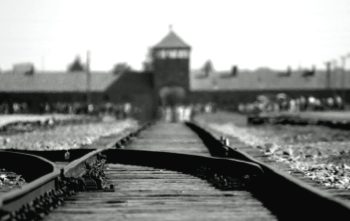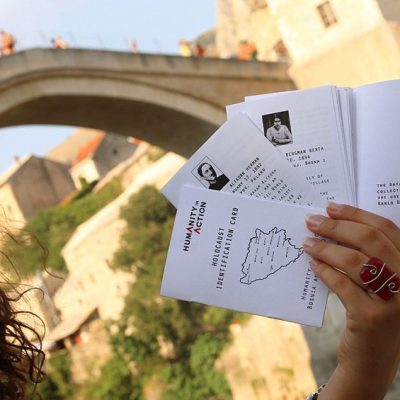Article
Telling the story from multiple perspectives
One of the world’s largest troves of World War II diaries is archived at the NIOD Institute for War, Holocaust and Genocide Studies, a Rococo mansion in the center Amsterdam’s historic canal district. Opened just four days after the liberation of the Netherlands, the archive took in personal writings from citizens across the political spectrum. Today, it holds more than 2,000 of these personal documents.
Research Fellow Nina Siegal, an Amsterdam-based New York Times journalist who has frequently covered Nazi-looted art restitution and other World War II related topics for the newspaper, was introduced to the archive in 2019. At that time, the Institute was developing a volunteer “adopt-a-diary” program to transcribe hand-written volumes to make them more accessible to researchers and the public. Siegal published a five-page article in The New York Times in April 2020, which featured excerpts and photographs of some striking examples of the diaries.
These long-lost voices ring out from inside the war — they represent a variety of perspectives and approaches to enduring the war. Some are Jewish people struggling against persecution, some are resistors, some are collaborators, and some are ordinary citizens just trying to get by.
She has now expanded the project into a book that will weave together excerpts from many of those diaries, telling the story of the war from multiple, but often overlapping, perspectives. After scanning hundreds of diary summaries and consulting with NIOD’s archivists, Siegal has selected seven full-length diaries to translate into English as the center of her book. They range from a school notebook scribbled by an 18-year old factory worker to several volumes written by a Jewish journalist in Westerbork camp.
These long-lost voices ring out from inside the war — they represent a variety of perspectives and approaches to enduring the war. Some are Jewish people struggling against persecution, some are resistors, some are collaborators, and some are ordinary citizens just trying to get by. Together, they represent a cross-section of Dutch citizens in wartime and give readers a sense of what it means to live inside an unjust society where violence, intimidation, cruelty, and inhumanity prevail.
The goals of this initiative:
- To provide personal perspectives on the Holocaust: For a long time, Holocaust remembrance has been bolstered by the personal testimonies of survivors of the war and their oral histories. As we lose that last generation of survivors, we need continued access the voices of those who lived through the war — these diaries provide that insight.
- To tell a complex story from multiple vantage points: What makes one person collaborate with the Nazis while another joins the resistance? How does a persecuted Jewish person decide whether to comply with the new draconian laws, go into hiding, or join the Jewish Council to try to mitigate the harm to fellow Jews? Complex ethical questions arise under a totalitarian regime. These diaries provide us with deeper understanding of moral decision-making.
- To strengthen our resolve to resist and combat authoritarianism, and to act against genocide: Reading these diaries, it is impossible to romanticize or minimize the horrendous impact of an authoritarian regime on the lives of innocent, defenseless communities. Reading these diaries will encourage us to act faster when we see signs of totalitarianism, persecution, and genocide.
Updated March 2021







